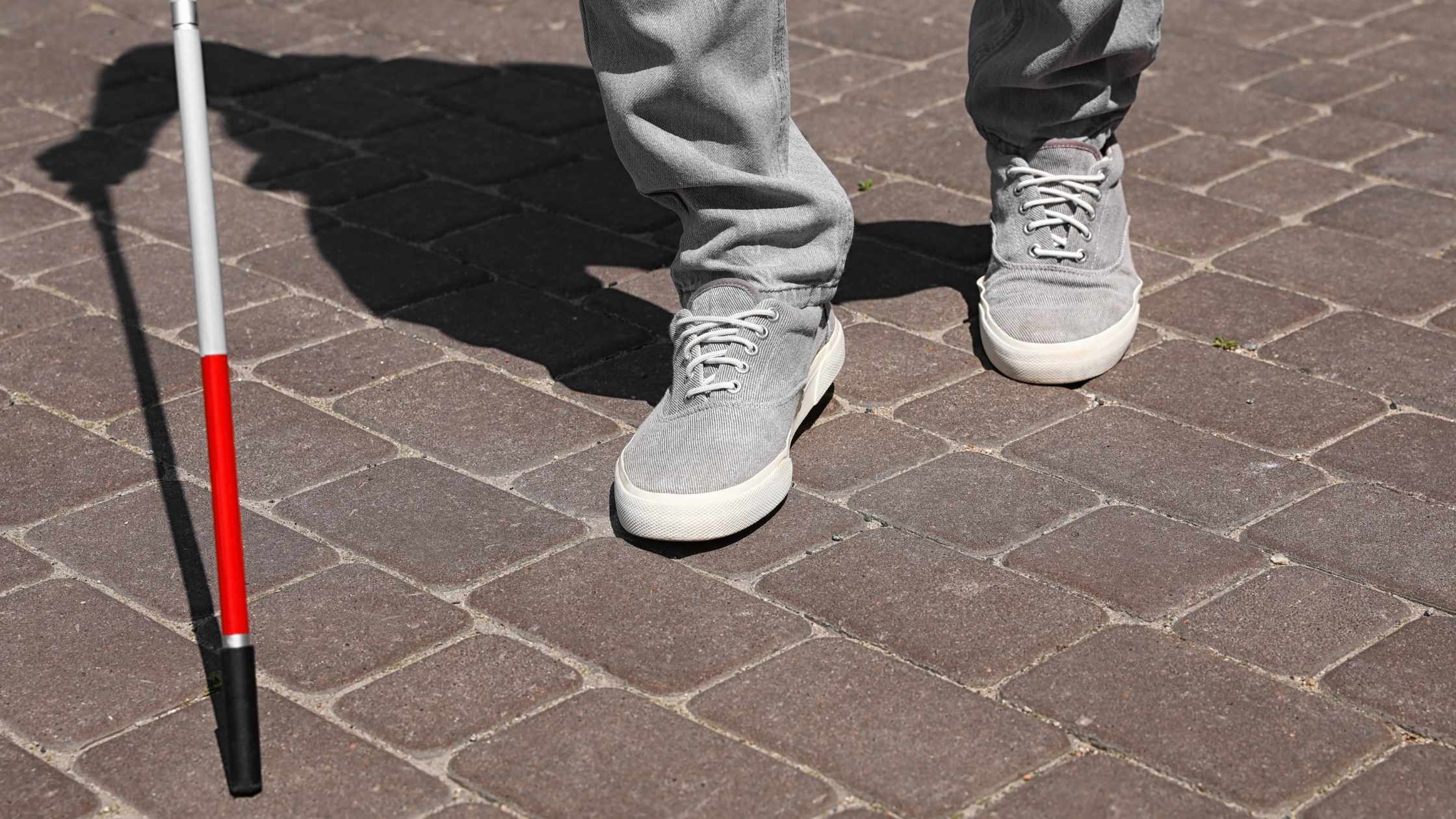Did you know that October is Pedestrian Safety Month? One important day during October is National White Cane Safety Day on October 15th.
National White Cane Safety Day was first established in 1964 to raise awareness of people who use white canes. The day can also be a celebration of white canes and their use in supporting the independence of blind or visually impaired people.
How can I support White Cane Safety Day?
If you care about pedestrian safety, there are some ways you can be involved in making streets safer for people who use white canes. These include:
- Conduct a walk audit, paying close attention to how a visually impaired person might experience the road. Is the walk signal working correctly? Is it far away, and difficult to see if someone had limited eyesight? Are tactile pavers installed, and are they aligned with the crosswalk? Do cars often turn right on red, making it more challenging for a visually impaired pedestrian to know when it is safe to cross the road? Are sidewalks narrow and cluttered with seating and trash cans?
- Whether you drive, walk, or bike, brush up on your laws! Did you know that visually impaired pedestrians have additional legal rights on the road? See below for more information.
- Learn more about how urban design can be improved to make it easier for visually impaired and blind pedestrians to independently live their lives.
- Learn at the new PROWAG guidelines, which provide new guidance on more accessible public spaces and right-of-ways.
- Learn about etiquette around pedestrians who are visually impaired. It is never okay to grab or touch someone, their cane, or any mobility device without their consent. If you believe someone may need assistance, you may ask if they need help or directions. Ask for their guidance on how you may best assist them, and trust that they know what is best for them.
- Want to test how much you know? Try out a quiz brought to you by the Wisconsin Council of the Blind and Visually Impaired. Take the quiz!
What additional rights do pedestrians using white canes have?
In addition to the basic rights all pedestrians have, pedestrians using white canes are granted additional rights that drivers and bicyclists must respect. Here are some differences:
- Drivers must yield and if necessary stop for pedestrians at all crosswalks and at intersections where pedestrians have the right of way (such as a walk or green signal). However, drivers must stop when approaching a pedestrian using a white cane or service animal, at least 10 feet before the pedestrian. Thus, the law requires drivers to conduct themselves with additional caution when approaching pedestrians using white canes or service animals.
- Pedestrians in Wisconsin are legally allowed to cross the street outside of crosswalks; however, in this case, pedestrians are required to yield to vehicles (unlike at crosswalks, where drivers must yield to people walking). Note that jaywalking is not illegal in Wisconsin, nor does the term appear in our state statutes. However, pedestrians who are blind or partially blind are additionally protected. A pedestrian who is using a white cane or service animal is not required to be obeying laws imposed upon other pedestrians in order for motorists to be obligated to obey the laws to avoid harm and stop for the visually impaired pedestrian.
- Note that it is against the law for people who are not blind or partially blind to use a white cane.
Learn the Laws
WI Stat. §346.26 Blind pedestrian on highway.
(1) An operator of a vehicle shall stop the vehicle before approaching closer than 10 feet to a pedestrian who is carrying a cane or walking stick which is white in color or white trimmed with red and which is held in an extended or raised position or who is using a service animal, as defined in §106.52(1)(fm), and shall take such precautions as may be necessary to avoid accident or injury to the pedestrian. The fact that the pedestrian may be violating any of the laws applicable to pedestrians does not relieve the operator of a vehicle from the duties imposed by this subsection.
(2) Nothing in this section shall be construed to deprive any totally or partially blind person not carrying the white or the red and white cane or walking stick or not using a service animal, as defined in §106.52(1)(fm), of the rights of other pedestrians crossing highways, nor shall the failure of such totally or partially blind pedestrian to carry such cane or walking stick or to use a service animal be evidence of any negligence.
(3) No person who is not totally or partially blind shall carry or use on any street, highway or other public place any cane or walking stick which is white in color, or white trimmed with red.
History: 1977 c. 302; 2005 a. 354.
